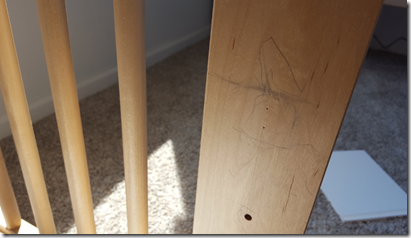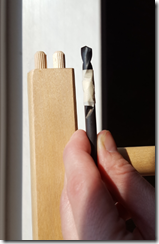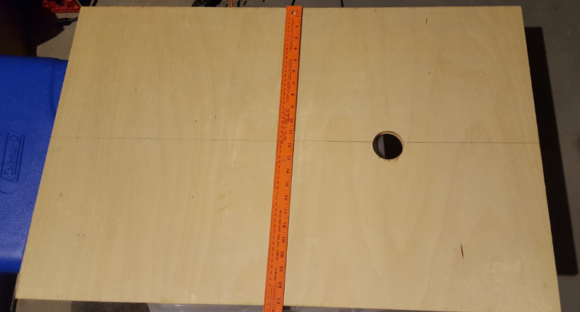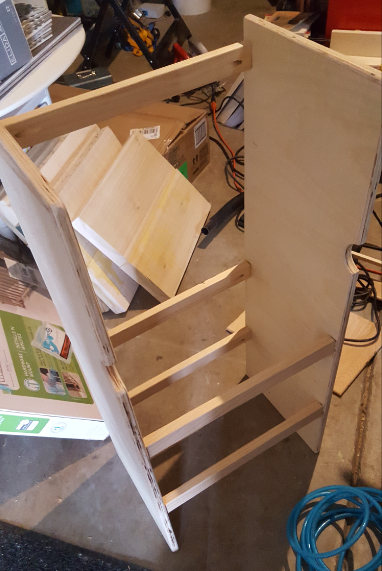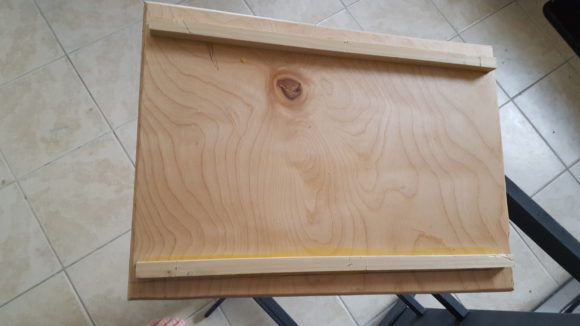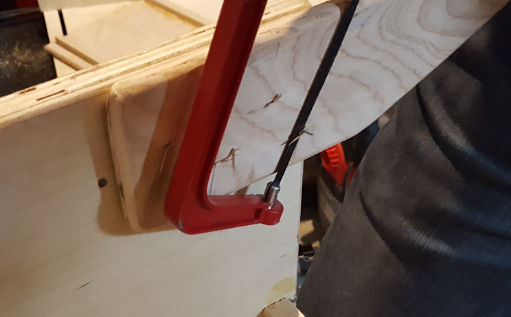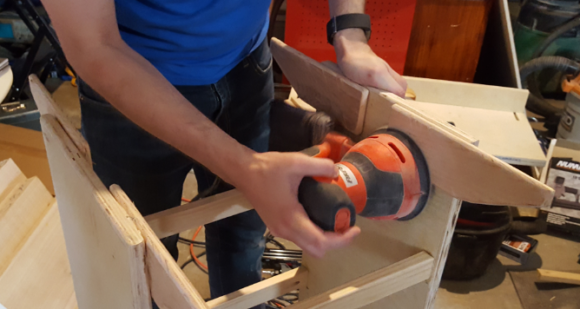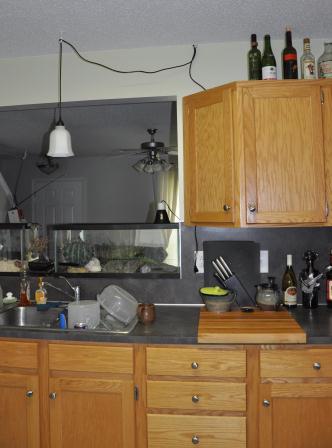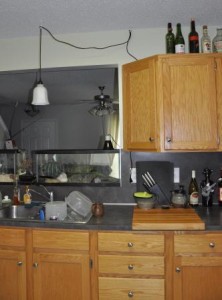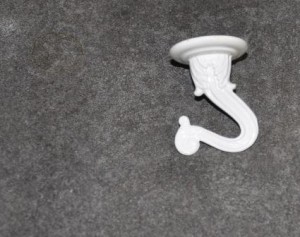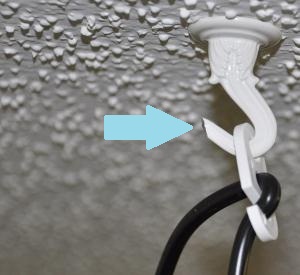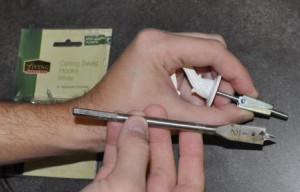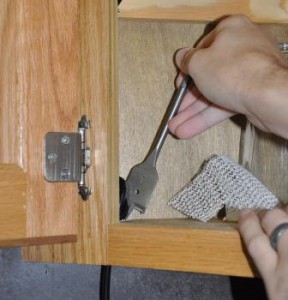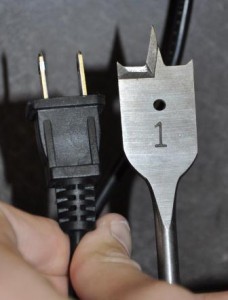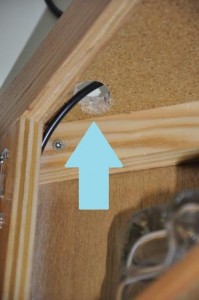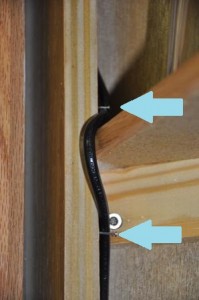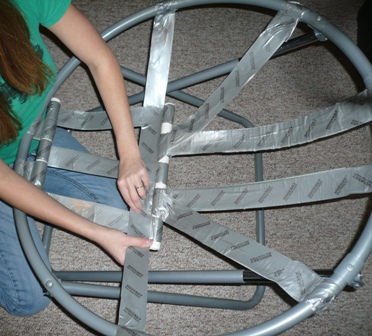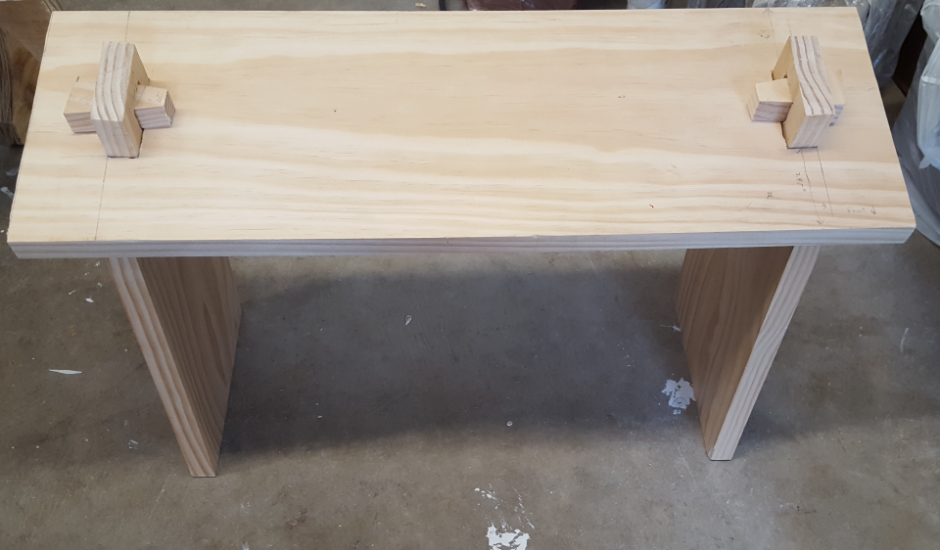
I used to have a standing desk for years, but since we moved, I haven’t found a similar solution. My posture is suffering because of it. I discovered that by resting on my knees at my computer desk, and raising my computer screen a bit I can get back in to the correct posture. I realized I could build a seiza bench would be the best solution to add a bit of support and reduce stress on my knees.
I began with an exhaustive search online but ended up just making my own. The design I liked most was this travel seiza bench from Sakura Co. While they list the dimensions on their site, I found that to be too short for my needs. I experimented, having my wife help measure how high my butt was from the ground when I was in the best position, but the best experimentation was when I went to build the bench in the garage. I sat on a bucket which happened to feel like a comfortable height. I have a variety of buckets in the garage so I tried them all out. I took measurements of the ones I liked most and went about freestyling the design.
I had an old 7 1/2” wide by 3/4” thick pine board from a previous project laying around the garage, so I began with that. I laid out the 2 heights I measured and drew a diagonal line to connect them. This will be the final angle of the bench. Then I went about measuring and calculating the tab lengths. Here’s what I ended up with.
In that pic, I had already made my first cut. Basically the back of the bench is 11 3/4” tall, the front is 10 1/4” tall. this is a pretty steep angle, but I feels acceptable so far as I’ve been using it, though I haven’t used it much yet and I may end up making a different angled bench.
The tab that sticks up at the top rises about 2 1/8” above where the bottom of the seat will be. It has to be high enough to go through the seat and accept the holding pin to mount the legs with a bit of material on top of the holding pin. That’s how I came up with that measurement.
I tweaked the design from the inspiration more by having my tabs move at a 90 degree angle from the slant, rather than follow the edge of the board as in the bench form Sakura Co. This makes is far easier to construct.
This entire project can be built using 1 pine board, electric drill with a 3/4” drill bit, and a jigsaw. I had other tools available so I used a circular saw to cut the board all the way across as you see in the above pic.
Next, I used the bandsaw to cut the excess material away from the tabs. You can see that I forgot to tune my bandsaw before cutting. This board looks pretty janky.
At this point, I messed again when cutting out the hole for the pin to fit into. I thought it’d be smart to drill a couple of holes just big enough for my jigsaw blade to fit into. I should have used the largest drill bit that would fit the hole instead. This made for a nasty cut where the pin is supposed to be tight.
The idea is to drill a hole or two to give your jigsaw blade enough room to cut the edges and the corners. It takes a few passes from different angles, but I got it done. Now I got my 30+ year old jigsaw out of someone’s garbage can… it’s missing a few screws, but gets the job done, even if it isn’t very clean.
The next board was easier to cut since I tuned up the bandsaw. It came out with much cleaner edges.
I made the same mistake of using too small a bit to drill the hole, however I did learn something. When drilling the hole in the first leg using the spade bit, I just drilled all the way through. This tore out the back and made a nasty edge.
This time, I drilled a into the piece from one side until just the tip of the spade bit poked through the back and I stopped. I flipped the piece over and placed the tip into the hole to line it up and then drilled the rest of the way through the wood. This left a much cleaner edge.
I’ll spare you the carnage from the jigsaw. It was better than the first one, but not good overall.
I then moved on to the seat. I cut a 22” long piece from the board. I measured 2 inches from each end to begin marking where I wanted the legs to mount. Due to the slat, the legs will stick out a bit from the seat about 3/8”. I decided to make the front of the legs flush with the seat and allow that excess to hang out the back. No one will notice that, and I won’t be annoyed by it while using it. I drew an arrow on each of the 3 parts to determine which side was the front. Then I traced the outline of the tabs for each leg on the seat board. I want as tight a fit as possible with this so it doesn’t wobble when I sit on it. Since each leg’s tab is a bit different due to my excrement woodworking skills, tracing the actual shape of the tab will get me a closer fit.
This is when I wised up about the spade bits. I mounted a 3/4” spade bit into my drill press and used the trick of going not quite all the way through the board, flipping it and drilling from the other side for a cleaner hole. Somehow I still managed not to get it perfect.
I made the edges and corners straight with the jigsaw again on each side.
Then I used some scrap wood and cut the pins on the bandsaw. I didn’t get a pic of them alone, but I made them wedge shaped with 2 right angles and a slanted side. One side 3/4” tall and the other 2 1/4” tall. The bottom edge (the longest edge which is at right angles to the sides) is 3 1/4” long. I made two of them.
To even out some of the nasty straight cuts, I went to my trust poor-man’s belt sander setup by clamping my handheld belt sander in my workmate project center and locked the trigger in the on position as I maneuvered the parts on the 150 grit sandpaper. Put the puzzle together and you have a bench!

I use a pillow on the ground under my knees to add some comfort, and I may eventually get either a couple of gardening knee rests (one for my knees and the other for my bum) or an hammock pillow for the seat. Given the ridiculous costs of hammock pillows though, I might just make a thin seat rest pillow myself to tie around the seat.












